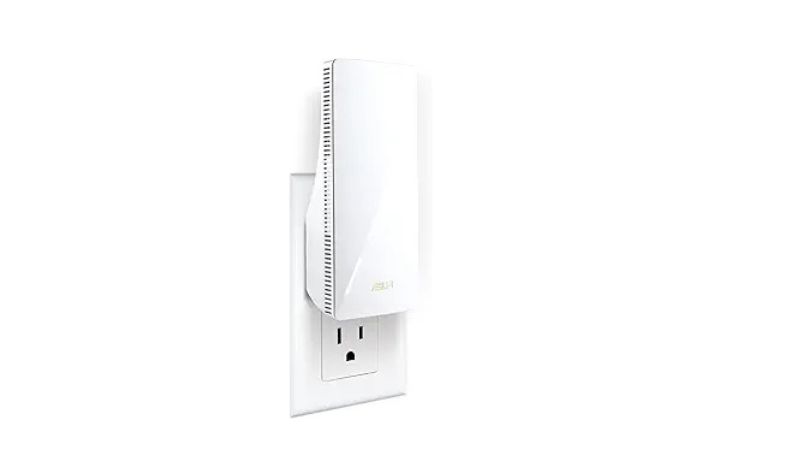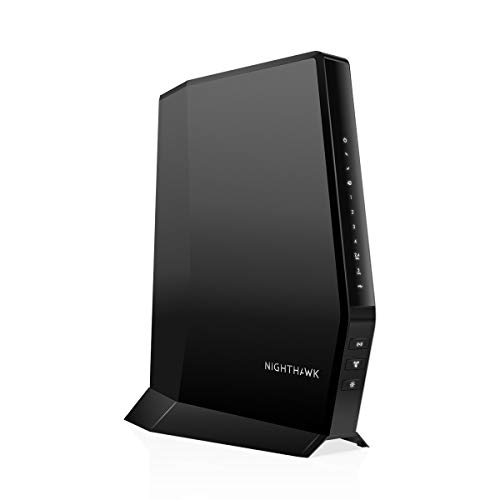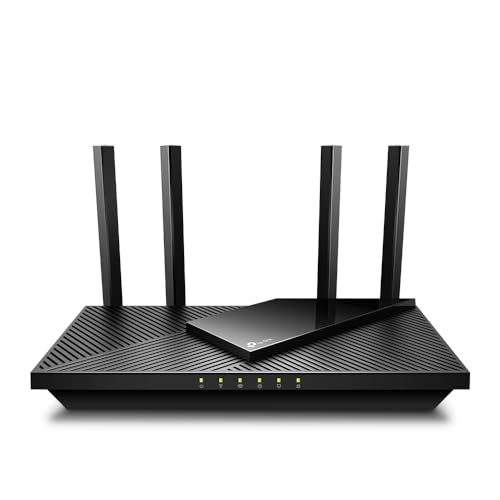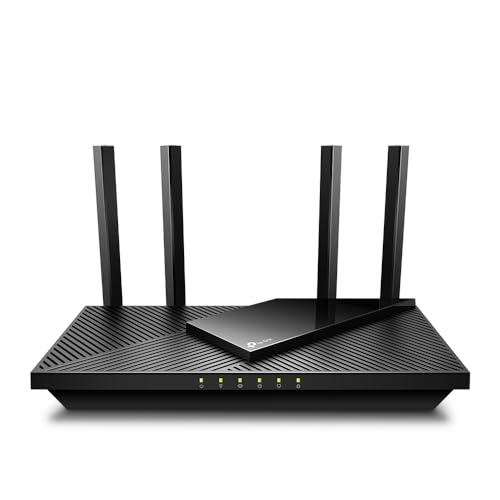Tired of frustrating WiFi dead zones in your home? You know the drill: your internet is blazing fast in the living room, but drop a few feet away into the bedroom or backyard, and suddenly you’re stuck with snail-paced loading or no connection at all. It’s a common headache, but thankfully, there’s a simple solution: a reliable WiFi range extender.
When it comes to extending your wireless signal, ASUS is a name often associated with robust and high-performing networking gear. An ASUS range extender can dramatically expand your network’s reach, ensuring smooth streaming, gaming, and browsing across every corner of your property. But what if you’re considering other excellent options that play nicely with your existing setup?
In this article, we’re diving deep into some of the best solutions to banish those WiFi dead zones. We’ll review three top-tier ASUS range extender models and also look at two highly-rated alternative extenders that could be perfect for your home, whether you’re looking for the latest WiFi 7 tech or a budget-friendly signal boost. Let’s get your whole home connected!
The Top ASUS Range Extenders & Alternatives Reviewed
ASUS RP-AX58 AX3000 Dual Band WiFi 6 (802.11ax) Range Extender

If you’re looking to future-proof your home network with the latest WiFi 6 technology, the ASUS RP-AX58 is an excellent choice. This ASUS range extender isn’t just about boosting your signal; it’s about delivering high-efficiency WiFi 6 speeds up to 3000 Mbps, ensuring that even in extended areas, your devices get the bandwidth they need. What truly makes it stand out is its seamless integration with ASUS’s AiMesh system, allowing you to create a unified, whole-home mesh network using compatible ASUS routers. Plus, with lifetime free AiProtection Pro, your network gets commercial-grade security against online threats.
- Key Features
- High Efficiency WiFi 6 for speeds up to 3000 Mbps.
- Commercial-grade Network Security: Lifetime free ASUS AiProtection Pro, powered by Trend Micro, with WPA3 encryption.
- Instant Guard: One-click secure internet access via your RT-AX68U from anywhere.
- Parental Controls for All Ages: Customizable internet access settings for different age groups.
- ASUS AiMesh Support: Create a flexible, seamless whole-home mesh network with AiMesh-compatible routers.
- Pros
- Blazing fast WiFi 6 speeds for modern devices.
- Robust, free lifetime security features.
- Excellent parental control options.
- Seamlessly integrates with AiMesh for unified whole-home coverage.
- Easy setup and management.
- Cons
- Best experienced with an ASUS AiMesh-compatible router.
- Might be overkill for smaller homes or older WiFi standards.
- User Impressions
Customers rave about the RP-AX58’s ability to eliminate dead zones, praising its strong signal penetration and straightforward setup. Many highlight the peace of mind offered by AiProtection Pro and the convenience of AiMesh integration for truly seamless WiFi. Gamers and streamers particularly appreciate the stable, high-speed connection.
ASUS RP-BE58 BE3600 Dual Band WiFi 7 (802.11be) Range Extender

Step into the future of wireless connectivity with the ASUS RP-BE58, boasting cutting-edge WiFi 7 (802.11be) technology. This is arguably the most advanced ASUS range extender on the market, pushing speeds up to an incredible 3600 Mbps. Its standout feature, Multi-link Operation, ensures incredibly stable and efficient data transfers by linking to multiple bands simultaneously. What’s more, it’s designed to work perfectly with virtually any WiFi router, making it a versatile choice, and it can also extend existing AiMesh WiFi systems for ultimate flexibility and coverage.
- Key Features
- WiFi 7 Standard: Dual-band range extender boosts speeds up to 3600 Mbps with 4096-QAM.
- Multi-link Operation: Links to multiple bands simultaneously for stable connections and efficient data transfers.
- Works Perfectly with Any WiFi Router: Compatible with virtually all WiFi routers, modems, and cable routers.
- Extend Seamless AiMesh WiFi Systems: Supports AiMesh for stable, seamless, and secure wireless connections.
- Easy Setup with Mobile App: Set up with the ASUS Router app or ASUS Extender app in just a few taps.
- Pros
- Future-proof WiFi 7 standard with phenomenal speeds.
- Multi-link Operation for superior stability and performance.
- Universal compatibility with any existing router.
- Supports AiMesh for advanced mesh networking.
- Extremely easy setup via mobile app.
- Cons
- Premium price point due to bleeding-edge technology.
- Full benefits require a WiFi 7 compatible router.
- User Impressions
Users are blown away by the RP-BE58’s speed and reliability, calling it a game-changer for large homes and data-intensive activities. The easy app setup and universal compatibility are frequently praised, along with its ability to maintain high speeds even at a distance. Many consider it a worthwhile investment for the ultimate home network experience.
Excellent Range Extender Alternatives and Compatible Options
While ASUS offers fantastic range extenders, there are other highly capable options on the market that can significantly boost your WiFi signal, often complementing your existing ASUS router or serving as robust standalone solutions.
AX3000 WiFi 6 Range Extender (Generic)

This AX3000 WiFi 6 range extender brings impressive performance and coverage to the table, making it a strong contender for anyone looking to eliminate WiFi dead zones without necessarily sticking to a single brand ecosystem. It offers full-speed AX3000 WiFi 6 with dual-band connectivity (2.4GHz at 600Mbps and 5GHz at 2400Mbps), ensuring smooth connectivity for everything from 8K streaming to online gaming. What truly sets it apart is its expansive coverage, reaching up to 13,888 sq. ft. with four external antennas, making it ideal for very large homes or multi-story buildings. Its high capacity also supports over 100 devices simultaneously.
- Key Features
- Full-Speed AX3000 WiFi 6: Dual-band 2.4GHz (600Mbps) and 5GHz (2400Mbps) for blazing speeds.
- Expands WiFi Range to 13,888 sq.ft: Four antennas widen signal coverage to eliminate dead zones.
- Great Compatibility, High Capacity: Supports 100+ devices and compatible with IEEE 802.11 ax/ac/a/n/g/b.
- Gigabit Ethernet Port: Provides fast, stable wired connections for devices like PCs, Smart TVs, or gaming consoles.
- Security Protocols & Quick Setup: Supports WEP/WPA/WPA2/802.1X and finishes setup in just 3 minutes via browser (no app required).
- Pros
- Exceptional coverage area, suitable for very large spaces.
- High capacity for numerous connected devices.
- Fast WiFi 6 speeds for demanding applications.
- Includes a Gigabit Ethernet port for wired connections.
- Simple, app-free setup process.
- Cons
- Not part of an integrated brand ecosystem like ASUS AiMesh.
- Generic branding might lack specific support channels.
- User Impressions
Users consistently praise this extender for its powerful signal and extensive coverage, often noting that it solved persistent dead zone issues. The easy setup and the ability to connect many devices are frequently highlighted. It’s often recommended as a cost-effective solution for significant WiFi expansion.
TP-Link AC1200 WiFi Extender, 2025 Wirecutter Best WiFi

The TP-Link AC1200 is a fantastic choice if you’re looking for a reliable and acclaimed WiFi extender that offers excellent value. Recognized as a “Wirecutter Best WiFi” pick, this extender boasts dual-band WiFi with a total bandwidth of 1.2 Gbps, providing solid speeds for both 5 GHz (867 Mbps) and 2.4 GHz (300 Mbps). It maximizes coverage up to 1600 sq. ft. for up to 32 devices, making it perfect for medium-sized homes. What really makes it shine is its EasyMesh compatibility, allowing it to seamlessly integrate with any EasyMesh-compatible router (including some ASUS models that also support EasyMesh, or other brands like TP-Link’s own). Plus, TP-Link’s commitment to cybersecurity offers an added layer of peace of mind.
- Key Features
- Dual-Band WiFi Extender with 1.2 Gbps Total Bandwidth (867 Mbps on 5 GHz, 300 Mbps on 2.4 GHz).
- Maximized Coverage up to 1600 Sq. Ft, eliminating dead zones for up to 32 devices.
- Cybersecurity Commitment: Designed, built, and maintained with advanced security.
- Fast Ethernet Port: For reliable wired connections to devices.
- EasyMesh-Compatible: Expand your network for seamless, whole-home mesh connectivity.
- Smart Adaptive Roaming: Automatic connections to the strongest signal.
- Access Point (AP) Mode: Turn any wired connection into a powerful Wi-Fi hotspot.
- Easy Set Up in Minutes: Using the TP-Link Tether app (Android, iOS) with intelligent signal indicator.
- Universal Compatibility: Works with almost all WiFi-enabled devices, routers, or access points.
- Pros
- Award-winning performance and reliability.
- EasyMesh compatibility for flexible mesh networking.
- Strong cybersecurity commitment.
- Versatile AP mode and fast Ethernet port.
- Universal compatibility and easy app-based setup.
- Cons
- AC1200 is an older WiFi standard compared to AX or BE.
- Does not directly increase your internet speed, but improves coverage.
- User Impressions
Reviewers consistently praise the TP-Link AC1200 for its ease of installation, reliable performance, and ability to effectively extend WiFi coverage. Many highlight its value for money and the convenience of the Tether app. The EasyMesh compatibility is a big plus for users wanting a simple mesh upgrade.
ASUS RT-AX1800S Dual Band WiFi 6 Extendable Router

While primarily a router, the ASUS RT-AX1800S is an “extendable router” that can play a crucial role in expanding your home network, especially within an AiMesh system. This router supports the New-Gen WiFi 6 (802.11ax) standard, offering MU-MIMO and OFDMA technology for vastly improved efficiency and throughput compared to older standards. With ultra-fast WiFi speed and 1024-QAM, it delivers dramatically faster wireless connections. The inclusion of four external antennas, a powerful dual-core processor, and five Gigabit ports (one WAN, four LAN) means it can handle multiple devices and heavy network traffic with ease. Its AiProtection Classic, powered by Trend Micro, offers commercial-grade security, and Instant Guard provides a one-click secure VPN for when you’re away.
- Key Features
- New-Gen WiFi Standard: WiFi 6 (802.11ax) with MU-MIMO and OFDMA technology for better efficiency.
- Ultra-fast WiFi Speed: Supports 1024-QAM for dramatically faster wireless connections.
- Increase Capacity and Efficiency: Efficiently allocates channels and communicates with multiple devices simultaneously.
- 5 Gigabit ports: One Gigabit WAN port and four Gigabit LAN ports, 10X faster than 100–Base T Ethernet.
- Commercial-grade Security Anywhere: AiProtection Classic, powered by Trend Micro, plus ASUS Instant Guard for secure VPN.
- External antenna x 4, Dual-core processor.
- Pros
- Full WiFi 6 router capabilities for high performance.
- Excellent for creating or expanding an AiMesh network.
- Includes robust security features and a secure VPN option.
- Multiple Gigabit Ethernet ports for wired connections.
- Handles many devices efficiently with MU-MIMO/OFDMA.
- Cons
- Primarily a router, which might be overkill if you only need a simple extender.
- Requires an AiMesh system to fully utilize its extending capabilities seamlessly.
- User Impressions
Users frequently praise the RT-AX1800S for its strong WiFi 6 performance, stable connection, and the added layer of security from AiProtection. Its role in an AiMesh setup is highly valued for creating a reliable, whole-home network. Many find it a versatile and powerful piece of networking hardware.
Conclusion
Say goodbye to frustrating WiFi dead zones! Investing in a quality range extender or an extendable router is one of the best ways to ensure a strong, stable internet connection throughout your entire home. Whether you opt for a dedicated ASUS range extender like the RP-AX58 or the cutting-edge RP-BE58, you’re getting robust features, advanced security, and seamless integration options like AiMesh.
We also looked at some fantastic alternatives, like the high-coverage generic AX3000 extender and the award-winning TP-Link AC1200, which offers great value and EasyMesh compatibility. The choice truly depends on your specific needs: do you prioritize the very latest WiFi 7 standard, robust security, expansive coverage, or seamless mesh integration?
Ultimately, the best advice is to assess your current home size, the number of devices you use, and your existing router’s capabilities. Picking the right extender will transform your internet experience, delivering consistent speeds and reliable connectivity to every corner of your living space. Happy browsing!
FAQ Section
Q1: What is a WiFi range extender and how does it work?
A: A WiFi range extender, also known as a WiFi booster or repeater, captures the existing WiFi signal from your main router and rebroadcasts it. This effectively extends the reach of your wireless network to areas where the signal was previously weak or non-existent, eliminating dead zones.
Q2: What is ASUS AiMesh, and why is it important for an ASUS range extender?
A: ASUS AiMesh is a technology that allows you to create a whole-home mesh WiFi system using multiple AiMesh-compatible ASUS routers or extenders. Instead of separate networks, it creates a single, seamless network name, allowing your devices to automatically switch to the strongest signal as you move around, without interruptions.
Q3: What’s the difference between WiFi 6 (802.11ax) and WiFi 7 (802.11be)?
A: WiFi 6 (802.11ax) offers significant improvements over previous generations, providing faster speeds, better efficiency in crowded networks, and improved battery life for devices. WiFi 7 (802.11be), also known as Wi-Fi 7 or Extremely High Throughput (EHT), is the next-gen standard, promising even greater speeds, lower latency, and features like Multi-Link Operation (MLO) for enhanced reliability and performance, especially for future demanding applications.
Q4: Where should I place my WiFi range extender for optimal performance?
A: For the best results, place your range extender about halfway between your main router and the WiFi dead zone. It needs to receive a strong signal from your router to effectively retransmit it. Avoid placing it near large metal objects, microwaves, or cordless phones, which can interfere with the signal. Most modern extenders come with a signal indicator to help you find the sweet spot.
Q5: Can I use a non-ASUS range extender with an ASUS router?
A: Yes, in most cases, you can. Most WiFi range extenders are designed to be universally compatible with any brand of WiFi router (802.11ac/n/g/b/a standards). While you might miss out on brand-specific features like ASUS AiMesh, the extender will still perform its primary function of extending your WiFi signal.
Q6: Do range extenders reduce internet speed?
A: Traditionally, range extenders can cause a slight drop in speed because they have to receive and then re-broadcast the signal on the same channel, effectively cutting bandwidth in half in some scenarios. However, modern dual-band extenders (especially WiFi 6/7) and those with features like dedicated backhaul or mesh technology minimize this speed reduction significantly, often making it unnoticeable for most users. Improving signal reliability often translates to better perceived speed even if raw throughput is slightly lower.
Q7: What’s the difference between a WiFi range extender and a mesh WiFi system?
A: A range extender primarily boosts an existing WiFi signal from a single router. A mesh WiFi system, on the other hand, consists of multiple nodes (a main router and satellite units) that work together to create a single, unified, whole-home network. Mesh systems offer more seamless roaming, typically better performance in very large homes, and often simpler management, making them a more advanced and robust solution compared to a single extender.
Q8: How difficult is it to set up an ASUS range extender?
A: Setting up an ASUS range extender is generally quite easy. Most models offer multiple setup methods:
1. WPS Button: Press the WPS button on your router, then on the extender, and they should connect automatically.
2. ASUS Router App/ASUS Extender App: Many models can be configured through a user-friendly mobile app with step-by-step instructions.
3. Web Browser: Connect to the extender’s default WiFi network, open a web browser, and follow the on-screen wizard.
The process usually takes just a few minutes.




Leave a Reply
You must be logged in to post a comment.